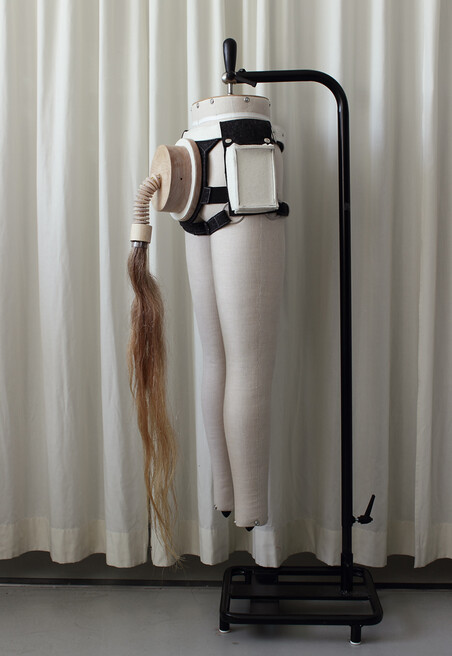Laura Beloff
Bereich: Medienkunst
Key Facts
Nationalität
FinnlandBereich
MedienkunstWohnort
HelsinkiEmpfehlende Institution
SCHAURAUM AngewandteZeitraum
Jänner 2011 - Februar 2011Laura Beloff is an internationally acclaimed artist who has been actively producing works and exhibiting worldwide in museums, galleries and art events since the late 1980’s. Beloff’s works can be described as peculiar wearable objects, programmed structures and participatory, networked installations. In her pieces she combines technology fluently with various mediums ranging from video to textile, from sound to sculptural and organic materials. Many of her works deal with individuals in the global society trying to adapt to artificially modified and enhanced complex world. Collaboration with other artists, musicians and computer scientists has been one of the features typical for her working methods. The recent exhibitions include Hamburg and in Helsinki 2012, in Vienna 2011, in Brazil and Russia 2008 and at the Venice Biennale 2007, forthcoming are exhibitions in Finland and Norway 2013. She has received various grants, residencies and awards; 2009 Prix Ars Electronica Honorary mention in Next Idea-category, 2002 Vida 5.0 honorary mention, 2000 File-festival the 3rd prize. She is frequently lecturing and publishing on her artistic research practice in universities and various conferences.
2002-06 she was Professor for media arts at the Art Academy in Oslo, Norway. 2007-11 she was awarded a five-year artist grant by the Finnish state. 2009-2010, 2011 she has been a visiting Professor at The University of Applied Arts in Vienna. She was awarded PhD-degree in 2012 by Plymouth University, Planetary Collegium. Currently (2013) she is an associate Professor at IT-University in Copenhagen.
The Appendix is a technological device in a form of a tail that is designed to become part of the user’s physiological body. However, the movements of the tail are triggered and controlled by real world events that are external to the user in a combination of natural phenomenon and a human-constructed artificial system. The horizontal direction of the tail movement is determined by the direction of the Helsinki city transport tramway in real time, and the vertical movements are triggered by the wave height of the Baltic Sea in real time.
The connections were intentionally selected to have no purposeful intention or self-evident meaning for the user. Rather, it constructs a situation in which it is possible to investigate techno-organic connections that merge the user’s body and the environment into a single entity.
This certain kind of non-intentionality of the connections rejects the rational approach to technology as a purposeful tool, but treats technology as an environment and material. The work presents an aesthetic experiment in which it is not known beforehand what the benefit is or what kind of experience it will create. Even though the structure of the work is based on technology, it purposely lacks an instrumental technological use as a means for achieving a predefined goal.
Central to the author’s constructed Appendix tail are the relationships between the body and technology, and the human and her surrounding environment. The latter two elements, humans and environment, are increasingly enhanced by technological and artificially created or modified features and connections.
<link http: www.realitydisfunction.org appendix _blank external-link-new-window externen link in neuem>www.realitydisfunction.org/appendix/


